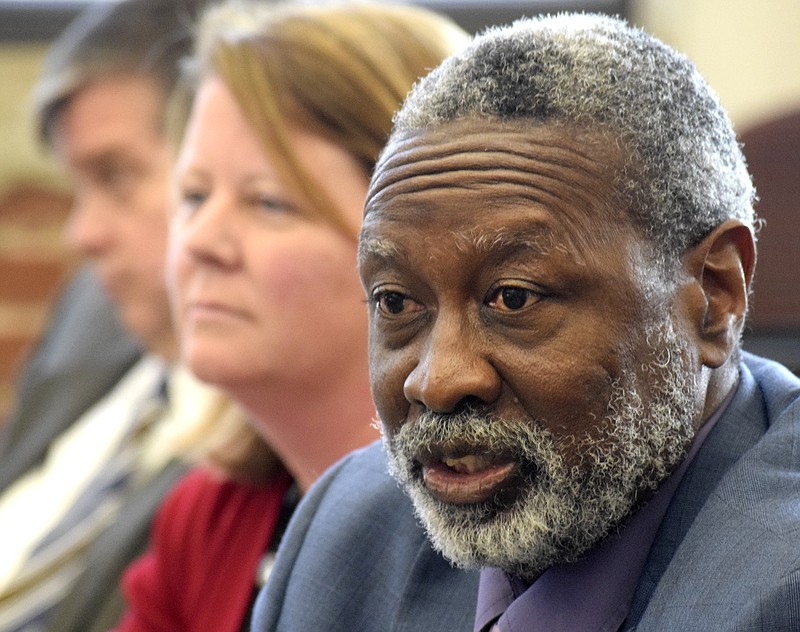Also read...
* New online guide provides information about Hamilton County Schools * Sohn: How many children do 887 'least effective' teachers touch?
No one concerned with education should believe statistics showing that nearly 30 percent of Hamilton County Schools' teachers are considered least effective tell the whole story of public education here.
But they do tell a story.
Yet critics of the Times Free Press publication of those statistics would have you believe teachers can have no adverse effect on students or schools. Instead, critics on the newspaper's Facebook site blamed parents, students, standardized tests, the state, private schools and even poor journalism that these statistics exist.
In truth, effectiveness rankings may not give a perfect picture of teachers' classroom performance. For example, teachers welcome a whole new crop of students to teach each year, which means they may have to modify their teaching strategies given the needs of the students. And principal evaluations likely differ from school to school or even classroom to classroom.
These dynamics could influence some effectiveness scores, but they certainly can't explain why Hamilton County has twice as many least-effective teachers as the Knox, Metro Nashville and Shelby County school districts.
Asked about this number in an editorial board meeting with Times Free Press reporters and editors last week, Interim Superintendent Kirk Kelly and Chief Academic Officer Jill Levine claimed it was unfair to judge teachers only by their effectiveness measure.
It's only one measure, but it sure doesn't put the local district in a good light. Four schools, Clifton Hills and Bess T. Shepherd Elementary schools and East Ridge and Sequoyah High schools, have more than 70 percent least-effective teachers, and 28 schools - most of them with a majority of economically poor students - have more than a third least- effective teachers.
On the other hand, schools such as East Lake Academy of Fine Arts and Rivermont Elementary, both with economically poor students but no least-effective teachers, showed marked gains on their TVAAS standardized tests.
The negative data come on the heels of the poor handling of a December 2015 Ooltewah High School rape case by the previous superintendent, of low 2014-2015 county standardized tests scores, of a withering response by the state Department of Education to the district's 2016-17 low-performing schools plan and to the Hamilton County Board of Education's interim superintendent hiring process.
Voters earlier this month spoke to those things in the only way they believed they had available to them by ousting three of the four members of the school board up for election. The new school board members won't directly affect the effectiveness of district teachers, but they should determine to keep the heat on the district to hire better teachers, improve poor teachers or show the ones who can't improve the exit.
Admittedly, improvement is not easy, but Kelly and Levine say they are working on it.
Teaching is a difficult profession, teachers are underpaid and standardized tests have cramped the style of the professionals hired to create a stimulating classroom environment, they argue.
Kelly said individual schools will have more autonomy going forward, and his core leadership team will be in every school more often. Progress throughout the year will be measured and reported. Professional development will be strengthened, and support for school leaders and teachers will be improved, he said.
And while the pipeline for teachers from other careers will be widened, the district's working relationship with the University of Tennessee at Chattanooga, whose graduates make up the majority of its first-year teachers, will be broadened.
Part of the strategy with UTC, according to Levine, is to assign student teachers to strong classroom teachers in hopes that some of the teacher's good work habits and instincts will rub off on the students.
One area where Hamilton County is at a disadvantage, Kelly acknowledged, is teacher pay. With nearby systems in Bradley County and some North Georgia counties paying more, Hamilton County often has to take what it can get.
Where it wants to be, Levine said, is to be such a strong district that teachers will want to come to it instead of settling for it.
That's where we want it to be, too. But it will never get there if district administrators, teachers and others who criticize the publication of teacher effectiveness data would rather bury their heads in the sand about what the statistics show.
Hamilton County should celebrate that more than 30 percent of its teachers are considered highly effective and more than 70 percent of its teachers are either highly effective or effective. But a school system striving for the best, desiring it to see - in Levine's words - "a new day," will do all it can to have highly effective teachers in all of its classrooms.
